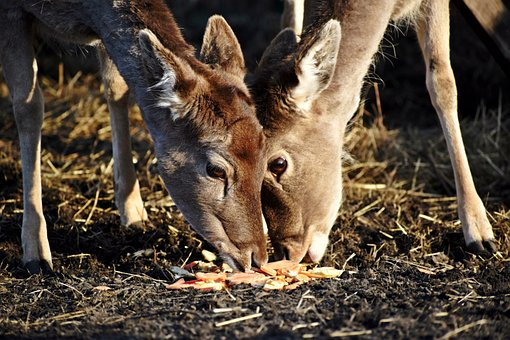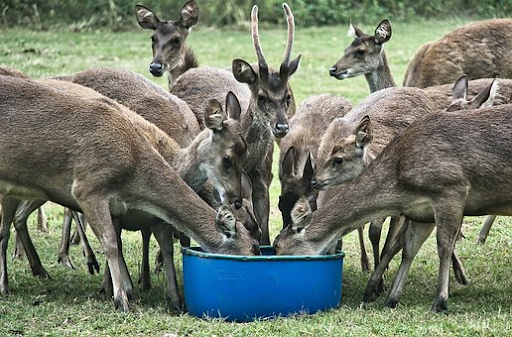Food plots are a great strategy to draw in and keep deer, whether you’re hunting new territory this season or want to enhance the quality of your current herd. But the procedure begins well before the official opening. Most hunters only consider setting up food plots in the fall to hunt over, but taking a wider perspective is the key. Your likelihood of seeing high-quality deer at the appropriate time of year will increase by assessing your surroundings, learning about deer movement patterns, and planting wisely all year long.
The procedures that will get you from having no food plots to having a high-performance food-plot system are essentially the same, regardless of how small or big your land is, and you should follow them in the same precise order. One explanation is that some actions require that others have already been completed. Another is that executing more than one task each time you visit the property might occasionally save you money and time.
Last but not least, as you work through the processes, you’ll be generating only a beginning point; most plans require modification based on how deer behave while implementing the plan.
1. Choose a Location
Consider many factors when choosing the location for planting food plots for deer. Look for a place that is great and strategically places for setting up your hunt and growing the plants. It is preferable to choose areas that are relatively flat because the sloppy regions can be challenging during the use of specific equipment and soil erosion. You must look for good topsoil depth with workable and quality soil. It should get proper sunlight for five hours each day and allow proper drainage. Planting close to dense cover or locations where deer are known to graze will draw more visitors to your plot.

2. Test the Soil
Before you plant the seed, you must apply fertilizer and lime to the soil to maximize the ability of the plant to get essential nutrients efficiently. The easiest way to determine it is to get some soil samples from the chosen location and test their pH level, and acidic soil may need the addition of lime to balance its pH.
3. Determine What You Will Plant
Planting various perennial seeds is preferable if you plan to use the soil every year. However, if you want to move the food plots yearly to different locations, you must plant annual seeds.
Look for plants that will thrive best in your chosen growing zone. Consider that forages already exist in that area and focus on sowing a rare plant to attract the deer and provide an excellent overall variation. Are you planning to hunt your plot during the early fall or late fall? Specific plant variations survive best during the early fall, while others grow better during the late season.

4. Determine the Best Fertilizer to Use
Follow the manufacturer’s fertilizing recommendation on the package when using a seed mix formulated for your food plot plantations. If you have bought bulk seed, it is better to seek advice from one of your local agricultural boards regarding the best fertilizer you may use.
5. Prepare the Plot, Apply the Fertilizer and Lime
Mow the areas with long grass or dense weeds, and remove debris from the cutting. After that, turn the ground over by physically removing the top layer of sod using a shovel or a garden plow to cut through the sod.
Next, add lime to the ground to neutralize the soil’s pH level according to your desire. For example, acidic soils require a lot of lime to increase alkalinity. Remember to apply the necessary amount of fertilizer by following the guidelines that would allow you to add the fertilizer per square foot. Allow the fertilizer and lime to weather off for some days before breaking the turned-over soil.
6. Break Up the Soil and Sow the Seed
Break the soil finely to fasten the germination rate of the seed and turn it over using a rototiller in small sections while mixing the combination of the fertilizer and lime. You can also use a garden disc on larger areas to break up your ground further.
You can either sow the seed on small plots by hand or use a tractor or ATV for larger plots. Spread seed in accordance with the volume recommendations made by the seed producer or your local agricultural board.

7. Maintain the Area
After planting, the plot requires proper maintenance to mature to the required degree, where your plants are thick and big enough to overpower and stop the weeds from developing. Make sure it does not grow back and pull any new weeds that arise. It could be necessary to hydrate the land during periods of extreme aridity. Additionally, keep an eye on the soil’s fertility and, if necessary, apply additional fertilizer later in the summer.
8. Observe Deer Activity and Hunt Your Plot
You may watch the deer behavior at your plot to decide where and how to hunt it. By installing a game camera in the region, you may discover when, how frequently, and from which direction the deer are moving. You may use this knowledge to decide where to put up a blind or stand and when is the optimum time of day to hunt a specific area.
Closing Thoughts
With the help of this step-by-step guide, you can effectively plant the food plots that will benefit the deer and other animals on properties you own or manage and enhance your hunting opportunities.






